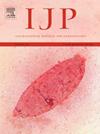Modelling the small spatial scale questing abundance of Hyalomma lusitanicum Koch, 1844 (Acari: Ixodidae), vector of Crimean-Congo haemorrhagic fever virus
IF 3.2
2区 医学
Q1 PARASITOLOGY
引用次数: 0
Abstract
Free-living ticks such as Hyalomma lusitanicum pose a risk to their hosts primarily due to their role as vectors of diseases, with Crimean-Congo haemorrhagic fever (CCHF) being an emerging disease of particular concern in the Iberian Peninsula. This study aims to understand the environmental determinants as well as the host effects that influence the abundance of H. lusitanicum at a small spatial scale. Understanding these factors is essential in identifying areas with a higher risk of tick abundance and, consequently, a greater likelihood of encountering a tick. We conducted 3,840 drags in 32 sampling points in a continental area of the Iberian Peninsula during the peak activity of H. lusitanicum, in May 2021 (1,800 drags in 15 points) and May 2022 (2,040 drags in 17 points). As potential factors influencing H. lusitanicum abundance, we modelled suitability for red deer and we estimated environmental variables that could influence the existence of optimal microhabitats for H. lusitanicum. We modelled H. lusitanicum abundance, performing generalized linear mixed models with a zero-inflated negative binomial distribution, using the abundance per drag as a response variable. We found that a higher local suitability for red deer is the primary determinant of small-scale abundance of H. lusitanicum in our study area. We found other significant factors that affect the abundance of H. lusitanicum which determine the presence of suitable microhabitats, such as adequate vegetation types (suggested by vegetation height), grasslands and mixed vegetation types, and low terrain permeability. This information will significantly aid in the development of more integrated, environmentally friendly, and effective long-term strategies for tick control and the prevention of tick-borne pathogens in regions with climatic and landscape conditions similar to those of our study site.

克里米亚-刚果出血热病毒载体luitanicum Koch, 1844(蜱螨:伊蚊科)的小空间尺度建模。
卢西坦透明体等自由生活的蜱对其宿主构成风险,主要是因为它们是疾病的媒介,克里米亚-刚果出血热(CCHF)是伊比利亚半岛特别令人关注的新出现的疾病。本研究旨在了解在小空间尺度上影响路西坦花丰度的环境决定因素和寄主效应。了解这些因素对于确定蜱虫繁殖风险较高的地区至关重要,因此更有可能遇到蜱虫。我们于2021年5月(15个点1800个)和2022年5月(17个点2040个)在lusitanicum的高峰活动期间,在伊比利亚半岛大陆地区的32个采样点采集了3840个样本。本文建立了马鹿适宜性模型,并对可能影响马鹿适宜微生境存在的环境变量进行了估算。我们将H. lusitanicum的丰度建模为零膨胀负二项分布的广义线性混合模型,使用每阻力的丰度作为响应变量。结果表明,马鹿的本地适宜性是本研究区小尺度种群丰度的主要决定因素。植被类型(植被高度)、草地和混合植被类型、低地形渗透率等因素对芦花蜜的丰度有显著影响,从而决定了适宜微生境的存在。这些信息将极大地有助于在气候和景观条件与我们研究地点相似的地区制定更综合、更环保、更有效的蜱虫控制和蜱传病原体预防长期战略。
本文章由计算机程序翻译,如有差异,请以英文原文为准。
求助全文
约1分钟内获得全文
求助全文
来源期刊
CiteScore
8.40
自引率
2.50%
发文量
76
审稿时长
23 days
期刊介绍:
International Journal for Parasitology offers authors the option to sponsor nonsubscriber access to their articles on Elsevier electronic publishing platforms. For more information please view our Sponsored Articles page. The International Journal for Parasitology publishes the results of original research in all aspects of basic and applied parasitology, including all the fields covered by its Specialist Editors, and ranging from parasites and host-parasite relationships of intrinsic biological interest to those of social and economic importance in human and veterinary medicine and agriculture.

 求助内容:
求助内容: 应助结果提醒方式:
应助结果提醒方式:


